Matsumoto: 17 Things to Do in Nagano's Historic City

Nagano's Matsumoto City is a cultural heritage center brimming with history and art. Travelers can admire Matsumoto Castle and work by Yayoi Kusama. Discover the 17 top attractions in the ideal home base for your Nagano Prefecture and Central Japan adventures.
Matsumoto – A City of History, Nature, and Culture

Photo by Pixta
Located in Nagano Prefecture, Matsumoto has long flourished as a prominent castle town. Thanks to its namesake Matsumoto Castle, a designated National Treasure, Matsumoto is a popular sightseeing destination. Visitors can experience its history and culture by strolling down historic streets, encountering Japanese art, and trying local dishes.
Vast nature rings the outskirts of the city, allowing for hiking and snow activities in areas like Kamikochi and Hakuba. Make travel plans to visit these spots while based in the city to hit all of Matsumoto’s best experiences and sightseeing opportunities.
Matsumoto is about two hours and 40 minutes by limited express train from Shinjuku Station in Tokyo. The city is also accessible by Shinkansen (bullet train) or limited express from Osaka or Kyoto in three hours.
Things to Do in Matsumoto
- 1. Matsumoto Castle
- 2. Matsumoto City Museum of Art
- 3. Japan Ukiyo-e Museum
- 4. Nakamachi
- 5. Nawate Street
- 6. Yohashira Shrine
- 7. Tenjin Fukashi Shrine
- 8. Kaichi School, Japan’s Oldest Elementary School
- 9. Matsumoto Timepiece Museum
- 10. Shinshu Dishes
- 11. Eat Nagano’s BQ Gourmet
- 12. Craft Beer
- 13. Kamikochi
- 14. Tateyama Kurobe Alpine Route
- 15. Daio Wasabi Farm, Azumino
- 16. Norikura Plateau
- 17. Hakuba
- Where to Stay in Matsumoto
- Access to Matsumoto
Read also
1. Explore History at Matsumoto Castle

Photo by Pixta
Matsumoto Castle was constructed as a residence for military commanders during the Sengoku Period in the 1500s. On the outside, it looks like a five-storied structure, but from inside, you can see that it's actually a six-storied castle. This architectural style is only found in two castles in Japan—Matsumoto and Himeji castles. Its uniquely beautiful black lacquered walls make it an invaluable national treasure.
Inside, the steepest set of stairs marches forward at a 61-degree incline, and massive pillars tower over visitors. Carpentry tools used during construction and harquebus, Spanish firearms used at the time the castle was built, are also exhibited. From its top-floor towers, Matsumoto Castle offers a stunning view of Matsumoto City and the Northern Alps.
At night, the Matsumoto Castle is illuminated. It’s even decorated for seasonal events. There are cherry blossoms in spring, traditional performances in the summer, and ice sculptures in the winter. It takes ten minutes to get to the castle on the Town Sneaker, the Matsumoto excursion bus line, from JR Matsumoto Station.
Address: 4-1 Marunouchi, Matsumoto, Nagano 390-0873, Japan
Fee: Adults - 610 yen for adults, elementary and junior high school students - 300 yen, free for children below elementary school age.
Hours: Daily, 8:30-16:30
Hotels near Matsumoto Castle
2. Admire the Yayoi Kusama Collection at the Matsumoto City Museum of Art

"The Visionary Flowers" by Yayoi Kusama, 2002. Picture courtesy of Matsumoto City Museum of Art
Matsumoto City Museum of Art features permanent exhibitions of works by artists with a strong connection to the city. "The Visionary Flowers," a giant artwork by the prominent avant-garde artist and Matsumoto-born Yayoi Kusama, decorates the museum's exterior. The exhibition rooms are also full of Yayoi Kusama collections, including her "Love Forever" series.
The museum's collection showcases a wide variety of mediums. These include the works of Munehide Hosokawa, a Matsumoto-born sculptor, and Shinzan Kamijo, a calligrapher. Access the city art museum in under 15 minutes by Town Sneaker East Bus (Japanese) or on foot from JR Matsumoto station.
Address: 4 -2-22 Central, Matsumoto, Nagano 390-0811, Japan
Fee: 410 yen
Hours: 9:00-17:00 (Last entry at 16:30)
Closed: Mondays, Dec. 29 - Jan. 2
Hotels near Matsumoto City Museum of Art
3. Encounter Traditional Art at the Japan Ukiyo-e Museum
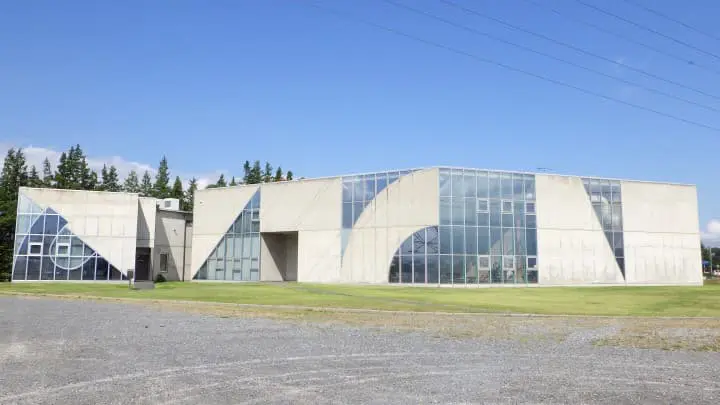
Picture courtesy of Japan Ukiyo-e Museum
The Japan Ukiyo-e Museum showcases works that once belonged to the Sakai family, a paper wholesaler in Matsumoto with a large ukiyo-e collection. The museum was founded in 1982 after this valuable private collection was left behind. The museum currently conducts art studies and holds exhibitions.
Ukiyo-e is a type of Japanese painting that was developed during the Edo Period (1603 – 1868). It was an art form that depicted the scenery, people, and lifestyle of the leisure class during that period.

An overview of the museum shop. Picture courtesy of Japan Ukiyo-e Museum
Ukiyo-e was a colorful type of print-making that used plant-based dyes from safflower and Japanese indigo. It was popularized at a time when art materials and ink were primarily available in black. These artworks were produced in large quantities as paintings as well as woodblock prints, finally allowing Japan’s ordinary people to enjoy art in their own spaces.
The Japan Ukiyo-e Museum possesses numerous works by ukiyo-e artists with worldwide recognition, including Katsushika Hokusai, who painted the Great Wave, Toshusai Sharaku, and Utagawa Hiroshige.
Address: 2206-1 Shimadachi, Matsumoto, Nagano 390-0852, Japan
Fee: Adults - 1,000 yen, Junior/senior high and college students students - 500 yen
Hours: 10:00 - 17:00
Closed: Mondays
4. Stroll Through Historical Shopping Streets- Nakamachi

Photo by Pixta
Nakamachi Street is located about six minutes on foot from Matsumoto Station. Matsumoto, a half-century-old castle town, was once bustling with businesses selling kimonos, alcohol, and other goods. Namako-walled homes, made to be fireproof by applying plaster onto mud walls, were constructed due to the town's many fires. These tiled Namako walls have preserved the town's elegant streetscape to this day.
The street is lined with traditional shops unique to Matsumoto. Enjoy sake manju at Fujimura, a Japanese confection store specializing in this steamed bun made with local Shinshu sake.
Locals love usuyaki, a regional fried dish made by mixing wheat, buckwheat flour, seasonal vegetables, and fruits together, at Usuyaki Cafe Mame Mame.
Appealing Japanese trinkets line the shelves of SANWA.
5. Hop and Shop on Frog-themed Nawate Street

Nawate Street, located between Matsumoto Station and Matsumoto Castle, is a shopping district made to recreate streets from the Edo Period. In 1879, it became the main path on the way to Yohashira Shrine. Nawate Street is best known for the many frog statues and amphibian-themed goods that can be purchased here.
There are close to 40 shops in the district, including food stalls. Rajindo sells tasty homemade senbei made with Shinshu miso. Taiyaki Furusato makes their taiyaki (fish-shaped pastries) filled with red bean paste the traditional way. There's also TOCA by Lifart, a boutique that carries general goods that make life a little bit more fun.
6. Visit Yohashira Shrine

Photo by Pixta
Yohashira Shrine, which looks out onto Nawate Street, was first constructed in 1879 and then reconstructed in 1924 after a fire. The shrine is dedicated to four deities, just as its name implies ("yohashira" means four pillars in Japanese).
The enshrined Amenominakanushi-no-Kami is the sovereign of the creator deities (gods that possessed the power to create all things in this world). Takamimusubi no Kami (Deity ruling the center of heaven) and Kamimusubi no Kami (Sacred Musubi Deity) are the gods that created life. Amaterasu Omikami is said to be the sun goddess and is the representative divinity of Japan.
On the shrine grounds, there are two pine trees that sprouted from one root system. Thus, they were coined the "Matchmaking Pine Trees." Many visitors come here with the belief that it's a spiritual spot for relationships and love. With its fresh greenery and autumn leaves, this serene atmosphere makes it the perfect place for a commemorative photo.
Hotels near Yohashira Shrine
7. Tenjin Fukashi Shrine

Photo by Pixta
Tenjin Fukashi Shrine, located about a 15-minute walk from Matsumoto Station, contains the Japanese characters for "strong will" in its name. The story goes that when Fukashi Castle—the predecessor of Matsumoto Castle—was constructed in 1504, retainers from the Ogasawara clan, who were once military commissioners of Nagano, made Fukashi Shrine’s diety into the castle's guardian spirit.
The Tenjin Festival is held over the course of two days on July 24 and 25, livening up the city with elaborate performances and festival floats. These floats are called butai among locals. The display of ornamental roofing, sculptures, and puppet performances are also highlights of the festival.
Hotels near Fukashi Shrine
8. Tour Kaichi School, Japan’s Oldest Elementary School

Photo by Pixta
Constructed in 1876, Kaichi School is the oldest remaining elementary schoolhouse in Japan. The structure is characterized by the ornate marquee in the protruding roof at the entrance. Its roof bears similarity to Buddhist temple architecture, recalling the old temple from which much of its timber was sourced, and is decorated with Western-style engravings.
Instead of a school bell, the drum tower that sounds the time is an octagonal space. The Former Kaichi School Building is where visitors can observe Giyofu architecture, a popular style from the 19th century that resembled Western architectural styles. Upon entering, you can see desks, chairs, and mini blackboards that were once used in classrooms for note-taking.
Address: 2-4-12 Kaichi, Matsumoto, Nagano 390-0876, Japan
Fee: Adults - 400 yen, Children - 200 yen, Group discounts available
Closed: Temporarily closed (May 2024-November 2024)
9. Listen to Time Flow at the Matsumoto Timepiece Museum

Photo by Pixta
Located 10 minutes on foot from Matsumoto Station, you'll find the Matsumoto Timepiece Museum and its rare collection of antique clocks. Japan's largest pendulum clock welcomes visitors to this quirky museum.
The timepieces on display are mainly items donated to the city by Chikazo Honda, a clockmaker and antique collector. Some of the clocks were also gifted to the museum by residents. The exhibitions aim to keep the appliances in constant operation. Upon entering the museum, visitors will be surrounded by the sound of the clock dials and ticking timepieces.
Address: 1-21-15 Central, Matsumoto, Nagano, Japan
Fee: 300 yen
Hours: 9:00 - 17:00
Closed: Mondays
Hotels near Matsumoto Timepiece Museum
10. Enjoy Local Shinshu Dishes

Try Shinshu soba (buckwheat noodles) and close relative, Toji-soba (a shabu-shabu style of soba that features foraged wild plants and mushrooms from the surrounding mountains).
There are several soba restaurants in the city—concentrated around Nakamachi Street and in front of the station—where you can eat the dark, fragrant Shinshu soba. A popular restaurant is Asada, a specialty soba and Japanese sake restaurant located 10 minutes on foot from Matsumoto Station.
Shinshu salmon is another famous product of land-locked Nagano. Its cultivation speaks to the area’s advanced aquaculture industry. These farmed salmon are known for their flavor and nutrition-dense meat that satisfies the needs of a Japanese diet. While Nagano is far from the ocean, high-quality farmed flounder and salmon can satisfy a seafood kick.
Asada
Address: 3-10-11 Fukashi, Matsumoto City, Nagano Prefecture
Hours: 11:30 - 16:00 or until sold out
Closed: Mon, Sun
11. Eat Nagano’s BQ Gourmet
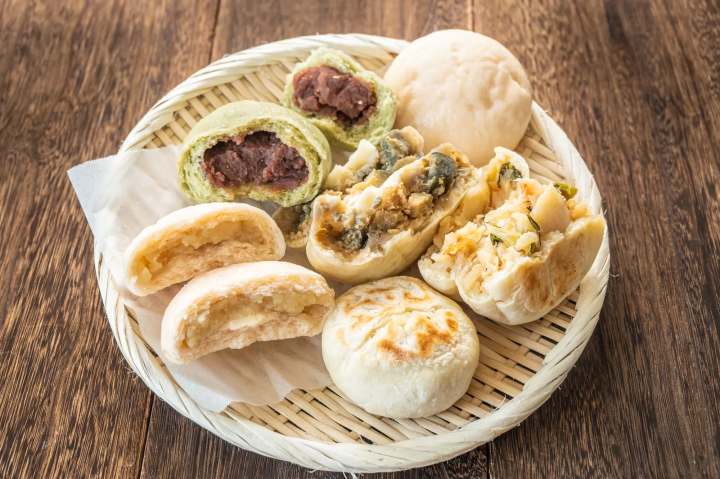
Photo by Pixta
B-Kyuu (or BQ for slang) gourmet is the Japanese term for snacks, junk food, and soul food. These filling dishes are the heart and soul of everyday life in Japan’s small towns.
Oyaki is a great on-the-go snack. This Nagano dumpling consists of dense wheat dough wrapped around seasonal vegetables or red bean paste, then roasted, pan-fried, or steamed.
At Takajoan, a specialty oyaki shop located 14 minutes away from Matsumoto Station, you can try ten different flavors of oyaki—all made from dough with homemade yeast and seasonings.
Takajoan
Address: 2-5-16 Shironishi, Matsumoto City, Nagano Prefecture
Hours: 10:00 to sold out
Irregular closures
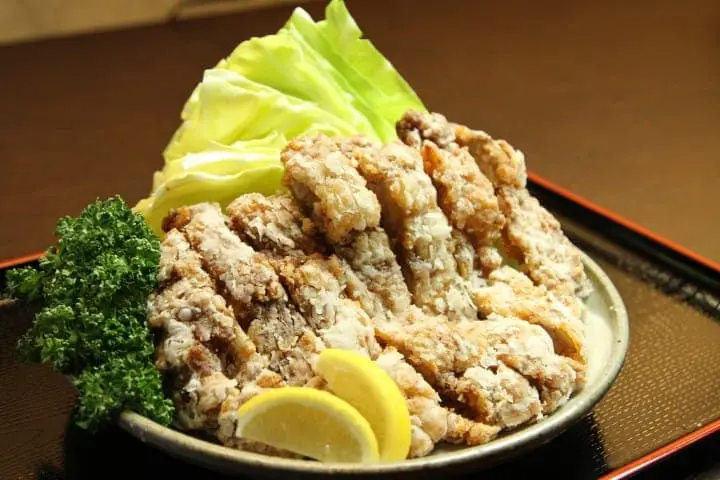
Photo by Pixta
Sanzoku-yaki is another local Matsumoto dish. Using a whole piece of chicken breast, meat is immersed in a soy-sauce-based marinade with condiments like ginger and garlic. It is then coated in potato starch before being fried. The result is similar to karaage but with a distinctly Nagano approach.
At Ippo, an izakaya (Japanese pub) located 15 minutes away from Matsumoto Station near Matsumoto Castle, you can enjoy a gigantic sanzoku-yaki. Ippo’s version is marinated in a miso sauce, then twice-fried for a crackling, crispy crust.
Izakaya Ippo
Address: 4-10-17 Ote, Matsumoto City, Nagano Prefecture
Hours: Lunch: 11:30 - 13:30, Dinner: 17:30 - 00:00
Closed: Sun
12. Sip Japanese Craft Beer

Because Nagano is a mountainous region, it's easier for the prefecture to grow buckwheat and wheat, rather than rice. This history has led to a rich culture of Western-inspired regional dishes and a vibrant beer industry.
Adult visitors can taste the local craft beer produced at Matsumoto Brewery Tap Room Nakamachi, a brewery with locations on Nakamachi Street and on the third floor of Shinmai Media Garden. These unique craft beverages are made with clean water from the Northern Alps.
The lineup contains six different varieties, including a fruity pale ale and an IPA (India Pale Ale) with special emphasis on its bitterness. As demand for Japanese craft beer grows, the brewery is currently expanding its vendors to places like local restaurants and hotels.
13. Enjoy the Serene Nature of Kamikochi

Take a walk in Kamikochi, the best place for trekking in Nagano. For a convenient ride with no transfers, board the bus leaving the terminal at Matsumoto Station's Castle Exit. The trip is approximately an hour and 30 minutes to central Kamikochi.
Kamimochi is designated as a natural monument. This area’s lush, unspoiled landscape will be preserved for future generations.
For less experienced hikers, the hour-long trail along the Azusa River is a breathtaking stroll. Or, trek to the Walter Weston relief and gaze out at Mt. Hotaka. The relief was created to commemorate Mr. Weston, who, in addition to his religious activity as an early English Missionary, was also a well-traveled mountaineer in Japan.
Mt. Yake, an active volcano measuring 2,455 meters high, is visible downstream of Tashiro Bridge. Crossing Tashiro Bridge itself is a worthwhile experience, as the suspension structure spans a picturesque river with great views.
14. Tateyama Kurobe Alpine Route

Photo by Pixta
The Tateyama Kurobe Alpine Route is a mountain route between Ogizawa Station in Nagano Prefecture and Tateyama Station in Toyama Prefecture. This route makes it possible for travelers based in Matsumoto to enjoy many amazing mountain views.
Personal vehicles cannot enter the course due to natural preservation efforts, but public transportation is available. It's approximately 55 minutes from Matsumoto Station to Shinano-Omachi Station on the Oito Line. It will then take 40 minutes by bus to Ogizawa Station.
Along this route, travelers will find the impressive Kurobe Dam in Toyama and Yuki no Otani, a stunning valley made from snowdrifts from April to June. If you plan on viewing Kurobe Dam—the tallest dam in Japan—then head to Tateyama Murodo (measuring 2,450 meters in elevation) by either cable car, ropeway, or trolley bus.
15. Daio Wasabi Farm, Azumino

Photo by Pixta
Daio Wasabi Farm is situated in Azumino, a city adjacent to Matsumoto, and is laid out with waterways filled with wasabi (Japanese horseradish) fields. It is now Japan's largest wasabi farm, but was a complete wilderness 100 years ago.
The 100th Anniversary Museum on the premises explains the farm’s extensive history. There is also a waterfront area with watermills that was the filming location for Akira Kurosawa's film "Dreams." The wasabi plant processing factory has tours available from April to November. Outside, the observation deck, and shrine—surrounded by charming boats—are perfect places to take a stroll in nice weather
Visitors can even enjoy food made with wasabi at the farm, including soft-serve ice cream, croquettes, and curry, or try making pickled wasabi themselves. A trip to the farm from Matsumoto city is fast enough to enjoy Daio Wasabi Farm as a half-day foodie excursion.
It takes just under half an hour to travel from Matsumoto Station to Hotaka Station on the Oito line. From the station, you can take either the Azumino Tour Bus or a taxi to the farm, which is a ten-minute ride.
Hotels near Daio Wasabi Farm
16. Norikura Plateau

Photo by Pixta
Norikura Plateau is located south of the Hida Mountains, otherwise known as the Northern Alps. A long snowy season makes it possible for travelers to enjoy skiing, snowboarding, and other activities.

Photo by Pixta
Snowshoes, special footwear worn to make movement easy in snow-covered areas, is something all can try. Rent a pair and experience a stroll on the snow for half a day!
For experienced travelers, backcountry skiing can be enjoyed on ungroomed areas along the powdery, snowy mountain slopes. To travel to the plateau from Matsumoto Station, take the Alpico Kotsu Kamikochi Line for 30 minutes to Shinshimashima Station. Then take the route bus from the station for 50 minutes to arrive at the Norikura Plateau.
Hakuba Village

Photo by Pixta
Hakuba is a popular area to play in the snow, located in the northern part of the Northern Alps. You can try riding a snowmobile, which are commonly found at ski resorts. Area tours are also available. Some companies offer snow rafting, a thrilling activity where you slide down a snowy mountain on a rubber raft!
To travel to the village from Matsumoto Station, head to Shinano-Omachi Station along the Oito Line. Transfer to a train heading for Minami-Otari Station, which will arrive at Hakuba Station in about one hour and 45 minutes. From the station, take the respective shuttle bus to your ski resort.
Hotels near White Horse Village
Where to stay in Matsumoto
Few destinations offer as much opportunity to dive into the old ways of Japan as the Chuubu region, where Matsumoto is located. Don't miss the opportunity to relax in a public bath and tuck into a home-cooked breakfast while in town.
Tabino Hotel lit Matsumoto
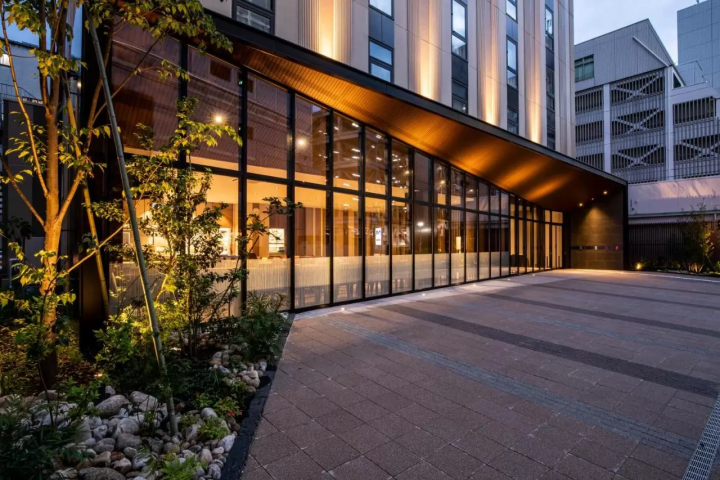
Photo courtesy of Booking.com
This contemporary hotel offers all the essentials for travel in Western or Japanese-style rooms. It is conveniently located near sightseeing spots such as the Ukiyo-e Museum and Matsumoto Castle and is under 10 miles from the airport. Its buffet breakfast is especially popular with guests.
Ryokan Seifuso

Photo courtesy of Booking.com
Ryokan Seifuso offers a homey ryokan experience minutes away from central Matsumoto. The family-owned ryokan provides Japanese-style accommodations, breakfast featuring local ingredients and honey from the family’s apiary, and rental bikes.
The family hosts foreign guests throughout the year and welcomes visitors to take part in on-site activities. Vegan, Vegetarian, and Western breakfast options are also available.
Hoshino Resorts Kai Matsumoto

Photo courtesy of Hoshino Resorts
Hoshino Resorts KAI Matsumoto is an elegant hotel featuring stunning public baths, live classical music concerts, and local wine-tasting events on-site. This resort-style hotel goes beyond accommodations to satisfy travelers with a wide array of activities.
Enjoy the uniqueness of Matsumoto even after tucking in for the night with KAI Matsumoto’s wide selection of local products and premium amenities.
Access to Matsumoto
From Shinjuku Station
Traveling to Matsumoto from Shinjuku station in Tokyo takes around two hours and 40 minutes on the Limited Express Azusa (6,620 yen one-way).
If taking the express bus, utilize either the Alpico Kotsu or Keio Bus. Depart from the Shinjuku Expressway Bus Terminal, located right outside the South Exit of Shinjuku Station. Busses typically arrive at the Matsumoto Bus Terminal in about three hours and 20 minutes (3,800 yen one-way).
From Tokyo Station
The daily Limited Express Azusa leaves Tokyo Station at 16:00 (4 pm) and travels directly to Matsumoto. There's only one train a day, and it takes about three hours with tickets starting from 6,620 yen one-way.
For another 1200 yen, it's recommended to opt for the more flexible Hokuriku Shinkansen to Nagano Station. Travel time is one hour and 40 minutes. starting from 7,810 yen for a one-way ticket. Then, transfer to the Limited Express Wide View Shinano for Matsumoto Station, which takes roughly 50 minutes (2,900 yen one-way).
Experience Japan's Great Outdoors and Traditions in Matsumoto

Photo by Pixta
Nagano Prefecture's rich history, culture, and the warmth of the locals make Matsumoto a very charming destination. Many nearby spots can be visited on an extended or day trip from the city.
Its convenient access to the heart of Japan, opportunities for cultural immersion, and a wide variety of outdoor and in-town activities make Matsumoto the ideal destination for anyone ready to venture off the golden route.
Read also
Main image by Pixta
旅関連を中心に、いろいろなところで執筆しています。娘たちとお出かけしたい場所を探す日々。
























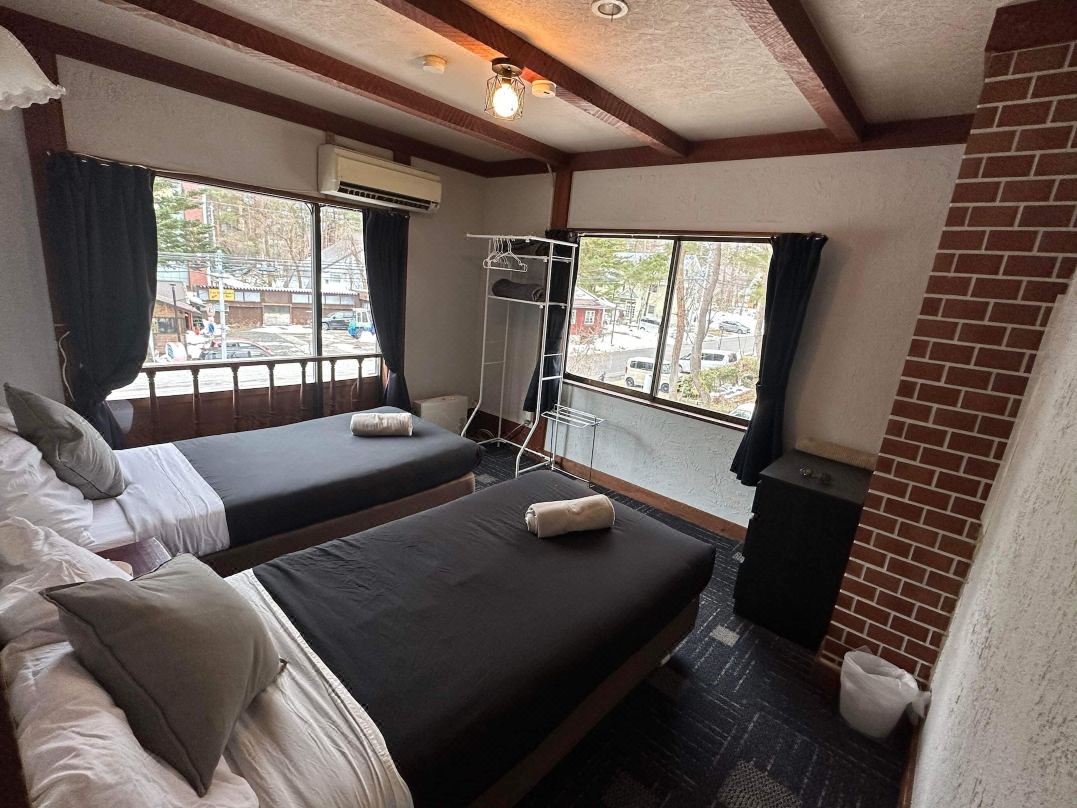


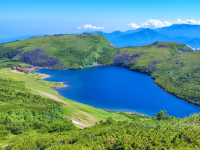









































![[2026] Family Winter Trip to Suzuka Circuit! – For Both Day trips and Overnight Stays!](https://resources.matcha-jp.com/resize/720x2000/2025/12/26-254097.webp)
![[Northern Okinawa] 4 Recommended Cosmos Fields in Okinawa | Sunflowers and Cherry Blossoms in the Same Season!](https://resources.matcha-jp.com/resize/720x2000/2024/08/12-192028.webp)


